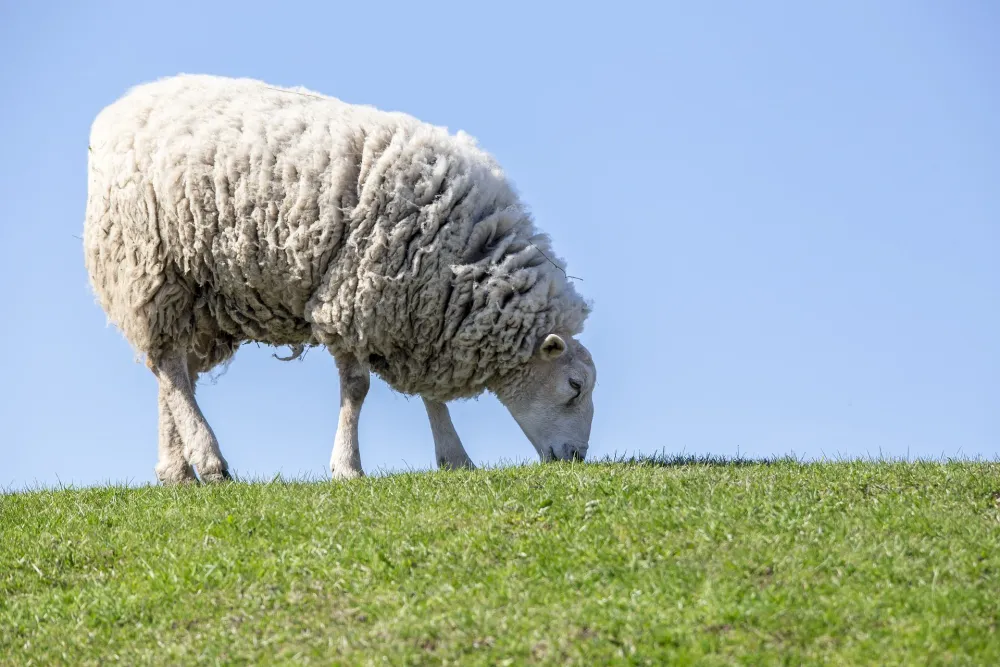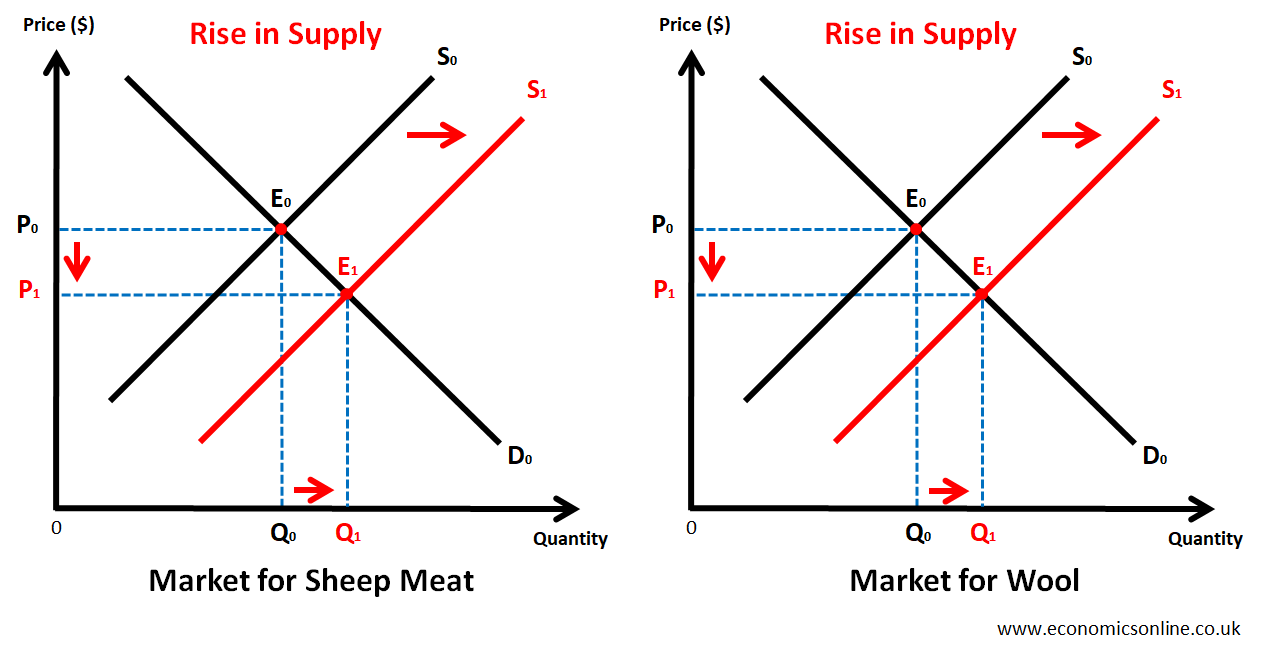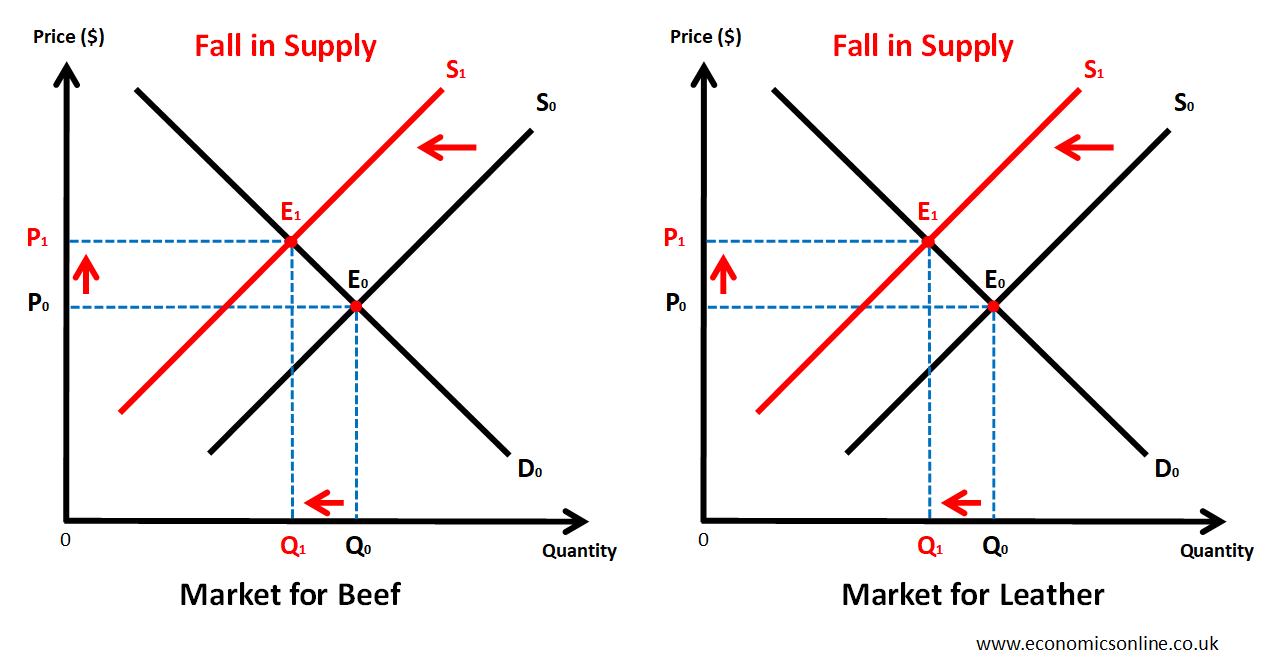
Picture of sheep containing wool.
Joint Supply
Joint supply refers to a situation in which two or more products are produced together from a common resource or input. In other words, the same resource or input is used to produce multiple products (joint products), and the production of one product cannot be separated from the production of another product. In joint supply, multiple products are produced through the same production process but for different purposes.
Joint supply isn't necessarily related to joint demand. Joint demand refers to the need for two goods in order to obtain a specific benefit. An example of joint demand is razors and razor blades, where you need both products to shave properly. Joint supply and joint demand are different concepts, as joint supply refers to the production side while joint demand refers to the consumption side.
Examples of Joint Supply
Beef and Leather
One example of joint supply is the production of beef and leather in the livestock industry. Cows are raised by cattle farmers for both their meat and their hide, which is used to make leather. The production of beef and leather cannot be separated, as the hide must be removed in order to produce the meat. Similarly, the production of wool and mutton also falls under joint supply, as sheep are raised by the sheep farmers for both their wool and their meat.
Oil and Natural Gas
Another example is the production of oil and natural gas. Both oil (gasoline) and natural gas are extracted from underground reservoirs, and the production of one cannot be separated from the production of the other. In the case of oil, natural gas is often found alongside oil and is extracted as a by-product.
Paper and Electricity
Joint supply can also occur in the form of coproduction, in which two or more products are produced simultaneously in a single production process. For example, a paper mill may produce both paper and electricity from wood.
Wheat and Straw
Growing wheat is another example of joint supply. When a farmer grows wheat, it is the primary product that is grown for human consumption, while straw is a by-product of the wheat plant.
Importance of Joint Supply
The concept of joint supply is an important issue in the field of economics, as it affects the pricing and production of the products involved.
In cases of joint supply, if there is an increase in the supply of sheep meat by sheep farmers, the supply of wool will also increase, leading to a fall in the price of wool. This is illustrated by the following diagrams.

In the above diagrams, if the supply curve of sheep meat is increased from S0 to S1 (diagram on the left), the supply curve of wool will also increase from S0 to S1 (diagram on the right), meaning that the price of wool decreases from P0 to P1 and the quantity traded of wool rises from Q0 to Q1. So an increase in the supply of a product will lead to lower prices for the products in joint supply. The opposite is also true when a decline in sheep meat production leads to less wool being traded. In other words, less motton means less wool.
In terms of production, the cost of producing one product can affect the production of another. For example, if the expense of raising cows for beef increases, the production of leather may decrease as well. This is illustrated by the following diagrams.

In the above diagrams, if the supply of beef is decreased from S0 to S1 (diagram on the left), the supply of leather will also decrease from S0 to S1 (diagram on the right), meaning that the price of leather increases from P0 to P1 and the quantity traded of leather decreases from Q0 to Q1.
Joint Supply and the Government Policies
Joint supply can also have an impact on government policies and regulations. For example, in the case of beef and leather production, the government may implement policies or regulations to protect the environment and animal welfare. These policies may increase the cost of production, which in turn may affect the demand and price of both beef and leather.
Furthermore, in the case of coproduction, the production of one product may be affected by the demand and price of the other product. For example, if the demand for paper decreases, the production of electricity may also decrease.
Benefits of Joint Supply
- Increased revenue: Joint supply allows businesses to generate multiple streams of revenue from a single production process. For example, a sheep farmer who raises sheep for both meat and wool can sell both products, rather than just one. This can help increase the overall revenue for the business.
- Cost savings: Joint supply can also lead to cost savings for businesses. By producing multiple products at the same time, businesses can share the costs of production, such as labor, materials, and equipment. This can lead to lower costs per unit of production and increased efficiency.
- Flexibility: Joint supply also provides businesses with greater flexibility in terms of product offerings and pricing. For example, if a business is only able to sell one product at a high price, it may not be able to compete with other businesses that are able to offer a similar product at a lower price. However, if a business is able to sell multiple products, it may be able to adapt its pricing strategy to better compete with other businesses.
Optimizing Production
In order to optimize the production and pricing of joint supply products, it is important for businesses and governments to have a clear understanding of the relationship between the products and their production costs. This can include conducting market research to understand the demand and price elasticity of the products, as well as analysing the production costs and potential government policies and regulations that may affect the production.
Conclusion
In summary, joint supply is a complex concept that can have significant impacts on both businesses and governments. It affects the pricing and production of the products involved, and can be influenced by a variety of factors, such as government policies, production costs, and market demand. By understanding the relationship between the products, businesses and governments can make informed decisions to optimize the production and pricing of joint supply products.


